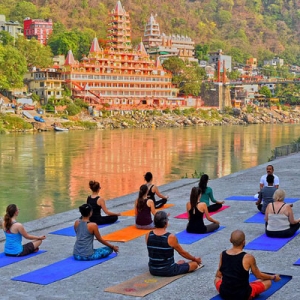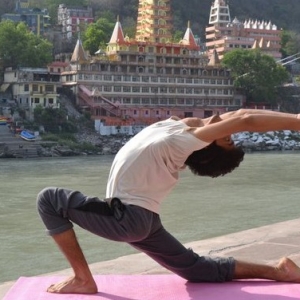Starting your yoga journey at a studio can feel both exciting and a little intimidating, especially if it’s your first time. In Canada, yoga studios are welcoming spaces where people of all backgrounds and skill levels come together to stretch, strengthen, and find inner calm. Whether you are stepping into a small boutique studio in Vancouver, a community center in Calgary, or a large urban wellness space in Toronto, you’ll find a blend of professionalism, warmth, and inclusivity.
If you’ve never been to a yoga class before, here’s a detailed guide on what you can expect during your first visit to a yoga studio in canada.
- A Warm Welcome and Inclusive Environment
One of the first things you’ll notice is the friendly atmosphere. Canadian yoga studios are known for their inclusivity, welcoming people regardless of age, fitness level, or body type. Many studios have a reception area where staff will greet you, help you sign in, and answer any questions you might have about the class or the facilities.
It’s common for studios to have a short conversation with first-time visitors to understand their experience level, any injuries, or personal goals. This allows the instructor to suggest modifications or recommend a suitable class style.
- Paperwork, Waivers, and Payment Options
Before your first class, you’ll likely need to fill out a short form or waiver. This usually includes contact information, emergency details, and a health questionnaire. The waiver is standard practice, ensuring you understand the nature of the activity and any associated risks.
Payment is straightforward—most Canadian studios accept debit, credit, and mobile payments. Many offer special “first-timer” packages or discounted trial passes, so you can explore different classes without a big commitment.
- Studio Etiquette and Expectations
Yoga studios in Canada value respect and mindfulness, not only in practice but also in how you interact with the space and others. A few key etiquette points include:
Arrive Early: Most studios recommend arriving 10–15 minutes before class starts.
Shoes Off: Yoga is practiced barefoot, and shoes are usually left in designated areas.
Silence in the Studio: Many people come to yoga for relaxation, so conversations are kept quiet or reserved for the lobby.
Phone-Free Zone: Phones are typically turned off or kept on silent in lockers.
- What to Wear and Bring
Comfort takes center stage when choosing clothes for yoga. You don’t need expensive outfits—just breathable, stretchy clothing that allows freedom of movement. Popular choices include leggings or joggers paired with a fitted T-shirt or tank top.
You may also need:
Yoga Mat: Some studios provide mats for free or a small rental fee.
Water Bottle: Staying hydrated is important, especially for hot yoga classes.
Towel: Useful for wiping sweat during more intense sessions.
If you’re unsure, call ahead to see what the studio provides. Many Canadian yoga studios offer high-quality mats, bolsters, blocks, and straps for their students.
- Class Styles to Expect
Canada’s yoga scene is diverse, offering a wide range of styles. For beginners, the most common options include:
Hatha Yoga: Slow-paced and great for learning basic poses.
Vinyasa Flow: A more dynamic style linking breath to movement.
Yin Yoga: Gentle, prolonged stretches that enhance flexibility and promote relaxation.
Hot Yoga: Practiced in a heated room, ideal for detoxification and flexibility.
Studios often post their schedules online with detailed class descriptions. Instructors are happy to recommend a class that matches your level and goals.
- The Start of Class: Centering and Breathwork
Your first yoga class in Canada will likely begin with a few minutes of centering—sitting quietly, focusing on the breath, and becoming aware of the present moment. This helps calm the mind and prepare the body for movement.
Instructors may guide you through pranayama (breathing exercises), which are essential in yoga. Don’t worry if you can’t get it perfect right away; breathing techniques develop over time.
- Learning the Poses
Once class begins, the instructor will guide you through a sequence of poses, offering modifications to suit different abilities. You might hear Sanskrit names like “Adho Mukha Svanasana” (Downward-Facing Dog) or “Balasana” (Child’s Pose), but teachers usually give the English names too.
In Canadian yoga studios, instructors often use hands-on adjustments—but only with your consent. Many now ask students to use a “consent card” or give a thumbs-up before assisting physically.
- The Use of Props
Canadian yoga studios often provide props such as blocks, straps, bolsters, and blankets. They make poses more accessible and help prevent injury. For example, if you can’t reach your toes in a forward bend, a strap can bridge the gap comfortably.
- Ending with Relaxation (Savasana)
Every yoga class traditionally ends with Savasana—a few minutes lying flat on your back, eyes closed, completely relaxed. This final pose allows your body to absorb the benefits of the practice. Studios in Canada often dim the lights, play soft music, or guide you through a short meditation at this stage.
- Post-Class Community and Support
After class, students often spend time talking with each other or the instructor. Some studios offer tea, healthy snacks, or wellness resources. This sense of community is one of the best parts of joining a yoga studio—you’ll meet like-minded people and perhaps make lasting friendships.
- Cultural Respect and Mindfulness
Many Canadian yoga instructors integrate elements of yoga philosophy and mindfulness into their classes. You might hear references to gratitude, non-judgment, or compassion. While you’re not expected to adopt a spiritual practice, keeping an open mind will enhance your experience.
- Your Personal Growth Journey
Your first yoga class is just the beginning. Over time, you’ll notice improvements in flexibility, strength, and mental clarity. More importantly, yoga encourages self-awareness, helping you listen to your body and mind in ways you might not have before.
Many beginners in Canada find that once they start attending regularly, yoga becomes not just exercise but a lifestyle choice that supports overall well-being.








